Powering Forward: the electricity industry and Birmingham
A few eyebrows were raised recently by the listing of the 1960s brutalist Moore Street substation in Sheffield, as part of English Heritage’s recent focus on post-war modernist architecture. The building has become a local landmark on the ring road in Sheffield, especially since National Grid started floodlighting it at night.
There is nothing quite like Moore Street in Birmingham, but the city has played an important part in the nation’s electricity industry. Not so long ago, power stations would have been a startling and imposing feature on the Birmingham skyline in a way difficult to imagine now, and less than a century ago most households wouldn’t have had any electricity supply at all.
In the early years of electricity generation, power was provided by a ragbag of local companies and forward-looking municipal corporations. The City of Birmingham operated its Electric Supply Department from 1903, and built the Summer Lane power station shortly after. It was built next to the canal to allow coal to be brought from the Black Country, not too far from Snow Hill. It can be seen in this aerial photo in 1921, beyond the old general hospital.
As Britain recovered from the War, industry was in crisis and needed a cheaper and reliable supply of electricity. The Weir Committee proposed the creation of the national Central Electricity Board (CEB) to solve the problem of inefficient and fragmented electricity supply with a ‘national gridiron’, the first integrated electricity grid system in the world.
Under the direction of the CEB, Britain embarked on the single biggest construction project that the country had ever seen. Across the country, small and inefficient power stations – including Summer Lane – were closed down and a generation of new ones proposed. They were to be linked by the new national grid of substations and power lines, carried on distinctive pylons chosen by leading architect Sir Reginald Blomfield.
The City of Birmingham’s Nechells Power station was opened by the Prince of Wales in 1923. Hams Hall power station – just over the border in Warwickshire and at the time one of the largest in Europe – followed in 1929, and became the pivot of the Midlands network. It was built on the former estate of Charles Adderley, the 1st Baron Norton, who also donated the land to create Adderley Park in Saltley.
The grid was complete by the late 1930s, and proved its worth by keeping the lights on during The Blitz; supply could be switched from the rest of Britain after Battersea and Fulham power stations in London were both bombed. The post-war Atlee government nationalised the electricity industry in 1947. Further larger power stations were built at Hams Hall in the late 1940s (Hams Hall B) and again in the 1950s (Hams Hall C). A second power station was completed at Nechells in 1954. The picture below shows a view from near Aston Park in a 1968 slide from the excellent Phyllis Nicklin collection (see here and here for a couple of others).
These power stations, and especially their enormous cooling towers, are now all demolished and will probably be missed by few. Nechells power station closed in 1982, but the the turbine hall has been incorporated into the StarCity development. As a youngster, I watched from the end of our road as the last cooling tower of the Hams Hall B substation being demolished. (Following privatisation in 1990, the chimneys and cooling towers of Hams Hall C were unsportingly demolished under darkness in 1993.) The unique space-age control centre still remains and looks fascinating, but lies redundant and is closed to the public.
The most interesting footprints of the electricity industry left in Birmingham are the remaining substations from those early efforts to bring electricity to the people of the city. The substation tucked away on Upper Trinity Street in Bordesley (pictured above) has an impressive City of Birmingham crest proudly bearing the ‘Forward’ motto, hinting at the proud civic aspirations involved.
Bournville substation (above left), next door to Bournville railway station and dating to 1920, is also very impressive. Part of the original Summer Lane site is still there too, being used as a substation, which can still be seen near the Centro offices.Perhaps most interestingly, Selly Oak substation (above right) was ingeniously located in a redundant water pumping station, which was put out of use after the opening on the Elan Valley Aqueduct in 1906. My photo was taken from Bristol Road, but the best view is from the train, on the approach to Selly Oak station. It is a fine Martins & Chamberlain red brick and terracotta building in the Gothic style, and is Grade II listed. So, Birmingham does have a listed substation after all!


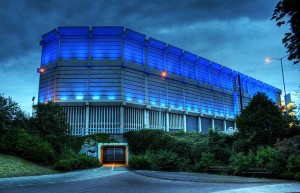
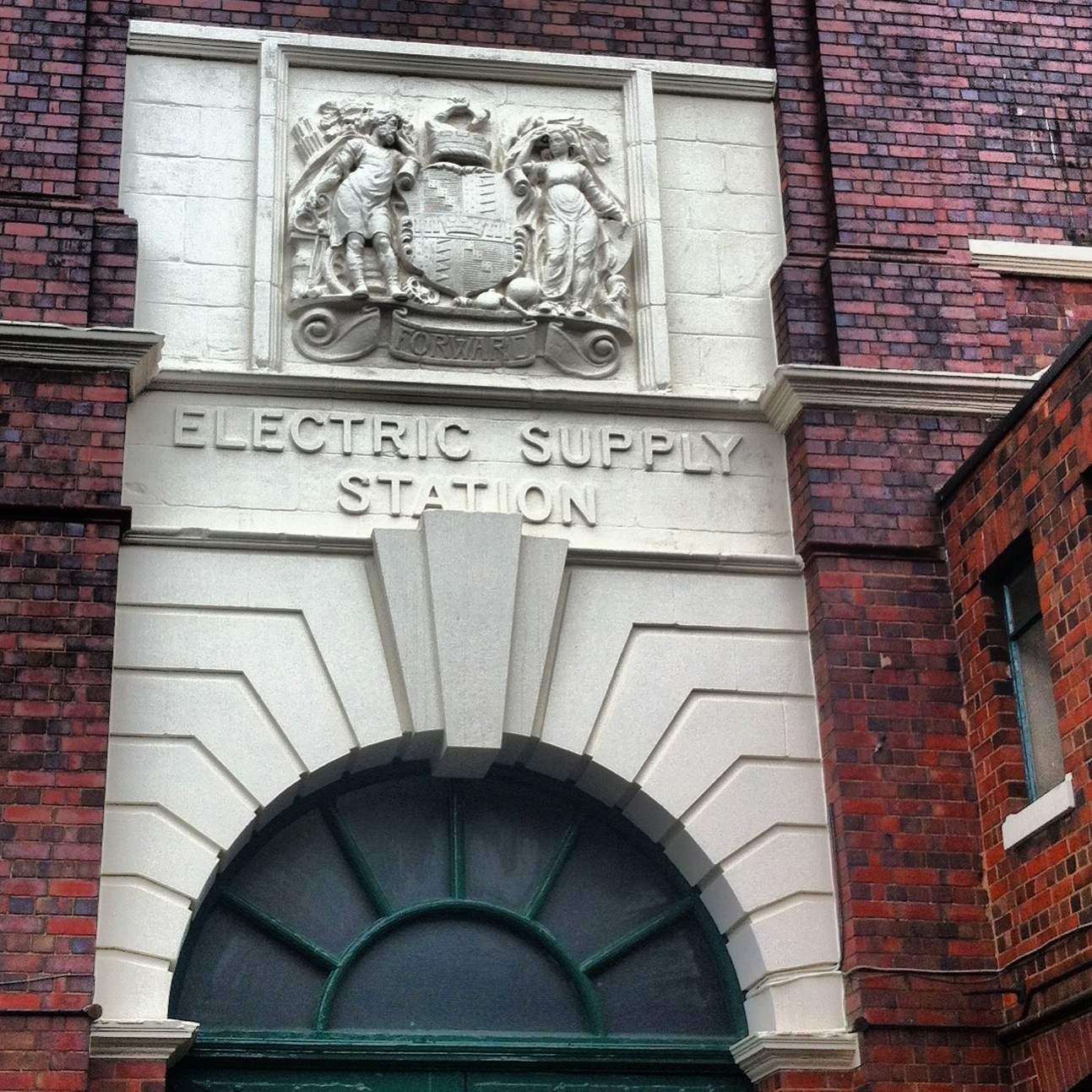
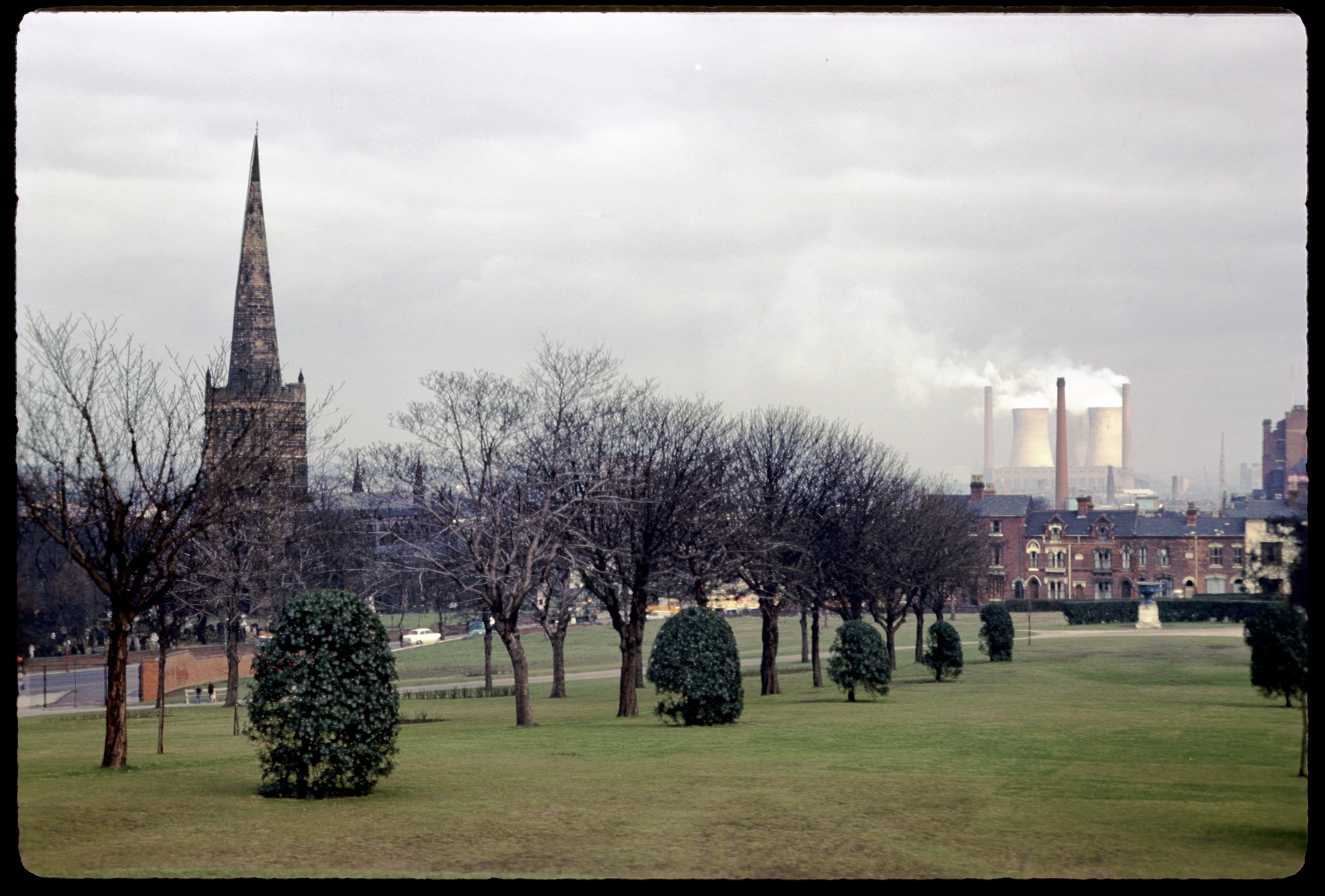
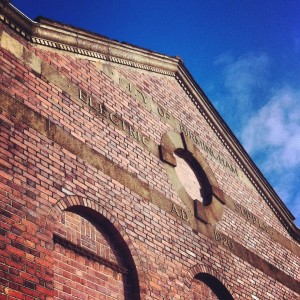
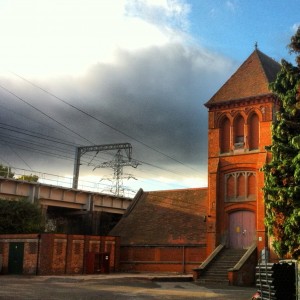

An interesting thread. My father, Fred Johnson, worked at Hams Hall ‘B’ from when it opened until he retired in 1973. But he’d previously worked at another station for which I can find very little information. Does anyone know anything about it?
It was ASTON MANOR CORPORATION ELECTRICITY WORKS. (Here’s part of an article from 1910)
These works are situated in Chester Street, Aston, with frontages to Chester Street and Rocky Lane, the rear of the works abutting on the Birmingham and Fazeley Canal. In 1898 the Corporation obtained a Provisional Order for the supply of electricity, the first portion of the generating station being completed, and supply commenced for lighting and power purposes, in September 1903, and for traction, in January 1904. In 1906, extensions were made to the generating station and plant; whilst in 1908 the inclusion of the Urban District of Erdington in the area for traction and general supply rendered further large extensions necessary; the engine and boiler-house buildings were completed, and the system of generation changed from low-tension continuous current to extra high-tension 3-phase alternating current at 50 periods.
I have just stumbled on this site and it has brought memories flooding back. I joined the CEGB in 1964 as a Student Apprentice going to Nechells in 1967. I trained in the maintenance departments for two years before finishing my training in operations. After my apprenticeship I was a control engineer and then an assistant shift charge engineer before moving to High Marnham about 1976. I remember some of the names mentioned including Geoff Brevitt, but also Cliff Peacock, Walter Malady, Eric Simpson. If any would like to share memories do get in touch.
Hi Steven,
My great uncle is Cliff Peacock. The stories Cliff told me as a child were one of the influences that pushed me towards a carreer in electrical engineering.
It would be great to talk to you, please can you get in contact via email.
Thanks,
Martin
I started my career with what was Midlands Electricity Board in 1965, spending the first 9 months at the Company Training office in Summer Lane, Birmingham, then continuing a 4 year apprenticeship as a cable jointer before taking up a position at there Birmingham South East Depot in Bordesley Green.
After 50 years in the Industry I finally retired spending the last few years of it with Western Power Distribution, working throughout the old MEB area.
There is an aerial photo taken of the power station during the 20s/30s on the Britain From Above site, it clear shows the canal boats that were used to bring in coal for the station.
Hi, this is a long shot, but I’m hoping that you can help me.
My dad Raymond Wilkins used to work at the Berlic, but I can’t find out anything about it, or any photos.
Hi Karen, I’m afraid I don’t know anything about Birlec, but it is always worth checking the reference library and the archives at the Library of Birmingham – they have lots of information on that kind of thing. Good luck!
I started work at Nechells Power Station in 1972 and was on John O’Connors shift he was the regulator on the boiler side. I started work blowing down the bunkers and then moved to the basement looking after the ash. After further training I became a stoker, I worked with Les Stahl, Dick Dale, Cyril Alder, Cyril Hill, George Bates. My father Donald Webber who was Admin Officer at Hams Hall and Nechells helped me get the job. I was interviewed by Albert Stafford. From Nechells I moved to Hams Hall C again working on operations. As the large 2000mw stations came on line I moved again to Didcot A and after being a plant attendant and Assistant Unit Operator I then became a Unit Operator. While there I worked in Pakistan and Portugal. After being involved with a large outage on Unit 4 as I was a SAP I had the opportunity to move to Didcot B CCGT where I stayed until I retired at the age of 60. I can honestly say I enjoyed working at all of these power station and would do it all again.
Hi Andy – Nechells B was my base station as a Student Apprentice from 1970-1975. It would be good to get in touch with you to reminise. John O’Connor and Les Stahl I remember well (and Albert Stafford, Bill Payne, Jim Aldridge, Geoff Brevitt, etc, etc). Your dad I knew when I took up my first engineering post at Hams Hall C Station in 1975 working in Planning but also with Gwyn Laviers, Roy Oakley, etc!!
My grandfather Alfred C Evans was assistant secretary at Hams Hall Power Station.He went to work there when it opened.I have some interesting memorabelia but do not know who to pass it on to.
I note the comment that the turbine hall at Nechells has been incorporated into Star City, but it seems from aerial views that only the switchroom/office block has survived. Could anyone local have a look to see?
You are correct Malcolm, the Control Room still remains as it is between two 11kv switch houses that continued in us as a part of the local distribution network, after Nechells B was demolished. Nechells B was my base station as a Student Apprentice with the CEBG 1970-1975. It was strange as a substation design manager for MEB back in about 2000, walking into that control room 25 years after I was last there!!! A crying shame too seeing what it had become after the pristine state it used to be maintained in!!!
I worked for the MEB, starting in 1978 as an engineer trainee, and I remember going into the ‘Roundhouse’ control room at Hams Hall and the control room and switch houses at Nechells B.
Later I was responsible for the DC batteries and chargers across the Birmingham area and regulalrly went into the Selly Oak substation. I think I still have a key fob that was inscribed with details of one of the pump motors from when the Selly Oak substation was a water pumping station.
I wish I’d taken photographs at the time, but then they were just work places to me.
Excellent piece,on a subject few people ever think about-electricity.
Perhaps you could also mention the Temporary Power Station at Nechells,built during WW1 after work on Nechells Power Station,proper,had been stopped in 1914.The ‘mastermind’ behind the Temporary Power Station was the City’s Electrical Engineer: Mr.R.A.Chattock.The station was built in two stages,the first stage being completed in only nine months.
Also,would you have any idea what happened to the archives of the City of Birmingham Electricity Supply Department?Have they survived and if so where might they be?
Hi Laurence, thanks for your comments.
I’m afraid I don’t know where the Electricity Supply Department archive might be if it indeed still exists. If still with the City Council, it would be likely to be in the Library of Birmingham archive, but there’s also a chance it would have stayed in the industry and gone to the Midland Electricity Board, which is now (after privatisation etc.) Western Power Distribution.
Hi Joe,thank you for the reply.
I joined the CEGB at Nechells back in 1968,hence my interest in the power station.
I have been to the Birmingham Reference Library and they do have some very interesting files (ex-PowerGen) and booklets relating to the history of electricity in Birmingham.
I haven’t tried the old MEB yet.Some of the Electricity Supply Departments records may have gone there upon nationalisation in 1948.
Thanks again for you help.
Eric Thomas
April 4, 2016
Hi Laurence – Nechells B was my base station as a Student Apprentice from 1970-1975. It would be good to get in touch with you to reminisce!!
Excellent piece Joe. Very intertesting for me personally given both my dad and grandad worked at Hams Hall, and I of course live in the city centre, not far from Upper Trinity Street.
Nice little article but as i mentioned on my flickr photo you have linked to, Amazing buildings are still being destroyed needlessly. Nowadays Hams Halls Control Room is nothing but an empty room with all of its unique architectural features deliberately destroyed by the owners, (who ever that may be). This has happened in the last 3 years.